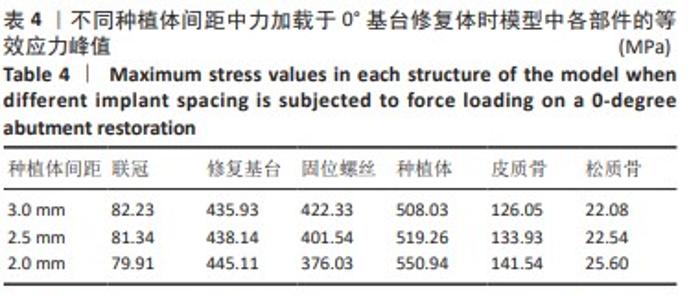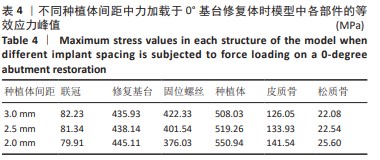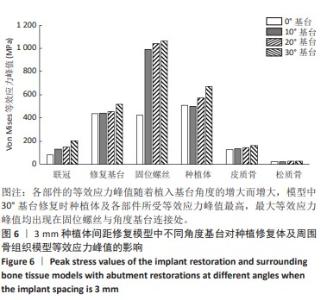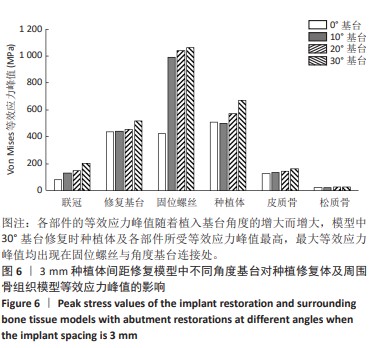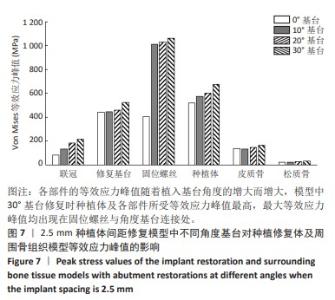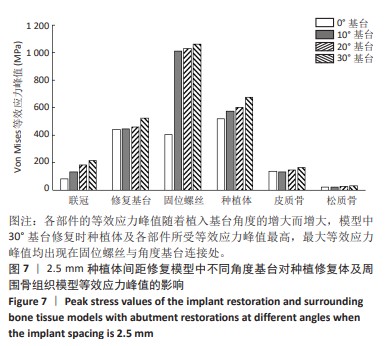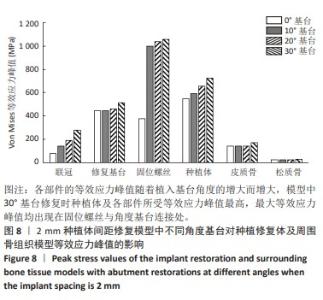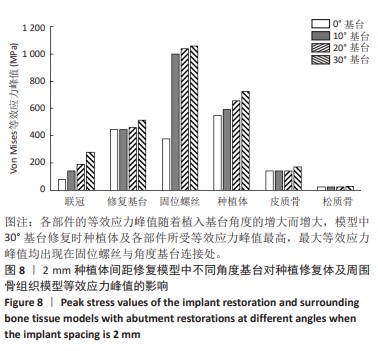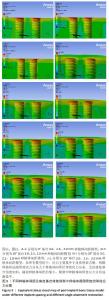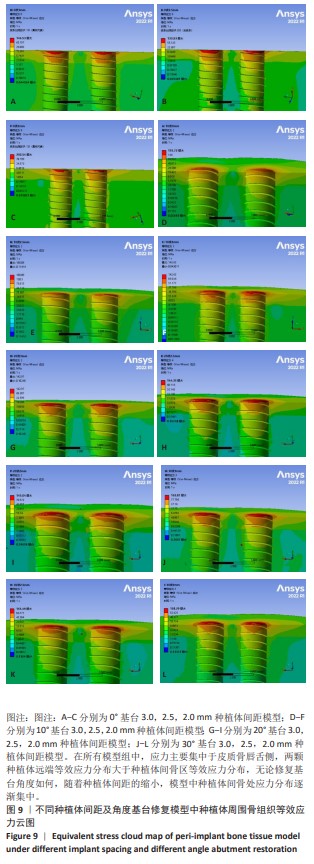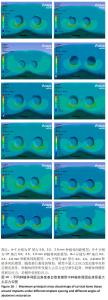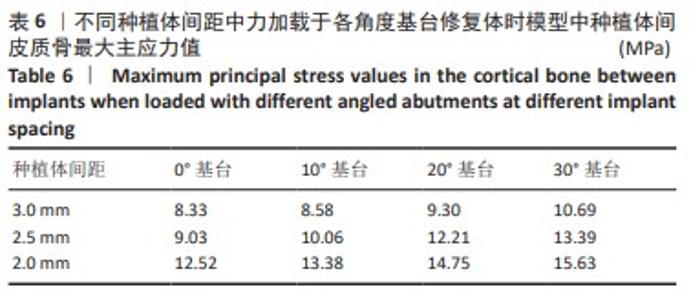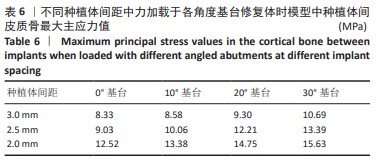[1] SACHIO T ,TOMOHIRO N. Recent Clinical Treatment and Basic Research on the Alveolar Bone. Biomedicines. 2023;11(3):843-843.
[2] ZHENG Z, AO X, XIE P, et al. The biological width around implant. J Prosthodont Res. 2021;65(1):11e8.
[3] TARNOW D, HOCHMAN M, CHU S, et al. A new definition of attached gingiva around teeth and implants in healthy and diseased sites. Int J Periodontics Restor Dent. 2021;41:43e9.
[4] CARDAROPOLI G, LEKHOLM U, WENNSTRÖM JL. Tissue alterations at implant-supported single-tooth replacements: a 1-year prospective clinical study. Clin Oral Implants Res. 2006;17(2):165-171.
[5] SAKAR D, GUNCU BM, ARIKAN H, et al. Effect of different implant locations and abutment types on stress and strain distribution under non-axial loading: A 3-dimensional finite element analysis. J Dent Sci. 2024;19(1):607-613.
[6] HUANG YC, HUANG YC, DING SJ. Primary stability of implant placement and loading related to dental implant materials and designs: a literature review. J Dent Sci. 2023;18(4):1467-1476.
[7] ZUPANCIC CEPIC L, FRANK M, REISINGER A, et al. Biomechanical finite element analysis of shortimplant-supported, 3-unit, fixed CAD/CAM prostheses in the posterior mandible. Int J Implant Dent. 2022;8(1):8.
[8] HUANG LS, HUANG YC, YUAN C, et al. Biomechanical evaluation of bridge span with three implant abutment designs and two connectors for tooth-implant supported prosthesis: a finite element analysis. J Dent Sci. 2023;18(1):248-263.
[9] FROST HM. A 2003 update of bone physiology and Wolff’s Law for clinicians. Angle Orthod. 2004;74: 3-15.
[10] 司金燕.上颌前牙种植应用角度基台在不同骨质条件下的三维有限元分析[D].杭州:浙江大学,2021.
[11] CHEN JD, YUE L, JUN MS, et al. Modified interproximal tunneling technique with customized sub-epithelial connective tissue graft for gingival papilla reconstruction: report of three cases with a cutback incision on the palatal side. BMC Oral Health. 2023;23(1):800.
[12] SALAMA H, SALAMA MA, GARBER D, et al. The interproximal height of bone: a guidepost to predictable aesthetic strategies and soft tissue contours in anterior tooth replacement. Pract Periodontics Aesthet Dent. 1998;10(9):1131-1141; quiz 1142.
[13] 胡佳慧,王海丞,黄洁,等.种植体间距与种植体周炎关系的实验研究[J].口腔颌面外科杂志,2021,31(3):142-149.
[14] QUARESMA SE, CURY PR, SENDYK WR, et al. A finite element analysis of two different dental implants: stress distribution in the prosthesis, abutment, implant, and supporting bone. J Oral Implantol. 2008;34(1):1-6.
[15] 白布加甫·叶力思,热娜古丽·买合木提,艾孜买提江·赛依提,等.上颌中切牙联冠种植修复体在不同咬合方式中的应力分析[J].中国组织工程研究,2022,26(4):567-572.
[16] MATSUOKA T, NAKANO T, YAMAGUCHI S, et al. Effects of Implant-Abutment Connection Type and Inter-Implant Distance on Inter-Implant Bone Stress and Microgap: Three-Dimensional Finite Element Analysis. Materials (Basel). 2021;14(9):2421.
[17] 代慧娟,王钊鑫,白布加甫·叶力思,等.三种咬合关系中树脂陶瓷冠和二氧化锆全瓷冠种植修复的生物力学差异[J].中国组织工程研究,2024,28(5):657-663.
[18] WANG J, ZHU YB, GAO M, et al. [Clinical effect evaluation of immediate implant and immediate restoration with socket-shield technique in aesthetic area: a retrospective study with up to 5-year follow-up]. Zhonghua Kou Qiang Yi Xue Za Zhi. 2023;58(3):251-257.
[19] SHAMIR R, DAUGELA P, JUODZBALYS G. Comparison of Classifications and Indexes for Extraction Socket and Implant Supported Restoration in the Aesthetic Zone: a Systematic Review. J Oral Maxillofac Res. 2022;13(2):e1.
[20] CIFTCI S, UNGOR C, SULEYMANLI B. Different Surgical Techniques in the All-on-4 Treatment Concept: Evaluation of the Stress Distribution Created in Implant and Peripheral Bone with Finite Element Analysis. Int J Oral Maxillofac Implants. 2023;38(6):1135-1144.
[21] SOLIMAN AT, TAMAM AR, YOUSIEF AS, et al. Assessment of stress distribution around implant fixture with three different crown materials. Tanta Dent J. 2015;12(4):249-258.
[22] SAMUR ERGUVEN S, KILINC Y, ERKMEN E, et al. A 3D dynamic finite element analysis of biomechanical behaviour of maxilla and fixative appliances following advancement Le Fort I surgery applied in different lengths. J Stomatol Oral Maxillofac Surg. 2023;125(5):101756.
[23] DE AVILA ED, DE MOLON RS, DE BARROS-FILHO LA, et al. Correction of Malpositioned Implants through Periodontal Surgery and Prosthetic Rehabilitation Using Angled Abutment. Case Rep Dent. 2014;2014: 702630.
[24] LEWIS SG, LLAMAS D, AVERA S. The UCLA abutment: a four-year review. J Prosthet Dent. 1992;67(4):509-515.
[25] CARDELLI P, MONTANI M, GALLIO M, et al. Angulated abutments and perimplants stress: F.E.M. analysis. Oral Implantol (Rome). 2009;2(1): 3-10.
[26] BAHUGUNA R, ANAND B, KUMAR D, et al. Evaluation of stress patterns in bone around dental implant for different abutment angulations under axial and oblique loading: A finite element analysis. Natl J Maxillofac Surg. 2013;4(1):46-51.
[27] ASHOK S, THOMAS K, PETER S, et al. Evolution of the concept of angulated abutments in implant dentistry: 14-year clinical data. Implant Dent. 2002;11(1):41-51.
[28] PAPAVASILIOU G, KAMPOSIORA P, BAYNE SC, et al. Three-dimensional finite element analysis of stress-distribution around single tooth implants as a function of bony support, prosthesis type, and loading during function. J Prosthet Dent. 1996;76(6):633-640.
[29] BROSH T, PILO R, SUDAI D. The influence of abutment angulation on strains and stresses along the implant/bone interface: Comparison between two experimental techniques. J Prosthet Dent. 1998;79: 328-334.
[30] HSU ML, CHUNG TF, KAO HC. Clinical applications of angled abutments: A literature review. Chin Dent J. 2005;24:15-20.
[31] KAO HC, GUNG YW, CHUNG TF, et al. The influence of abutment angulation on micromotion level for immediately loaded dental implant: A 3-D finite element analysis. Int J Oral Maxillofac Implants. 2008;23(4):623-630.
[32] 杨炎忠,田小华,周延民.氧化锆角度基台及种植体周骨壁应力分布的有限元分析[J].上海口腔医学,2015,24(4):447-450.
[33] ÖZIL E, ÖZKAN N, KESKIN M. The effect of short implants placed in the posterior region on tilted implants in the ‘All-On-Four’ treatment concept: a three-dimensional finite element stress analysis. Comput Methods Biomech Biomed Engin. 2024;27(9):1171-1180.
[34] WANG JQ, ZHANG Y, PANG M, et al. Biomechanical Comparison of Six Different Root-Analog Implants and the Conventional Morse Taper Implant by Finite Element Analysis. Front Genet. 2022;13:915679.
[35] BAYRAKTAR HH, MORGAN EF, NIEBUR GL, et al. Comparison of the elastic and yield properties of human femoral trabecular and cortical bone tissue. J Biomech. 2004;37(1):27-35.
[36] TARNOW DP, CHO SC, WALLACE SS. The effect of inter-implant distance on the height of inter-implant bone crest. J Periodontol. 2000;71(4):546-549.
[37] TRAINI T, NOVAES AB, PIATTELLI A, et al. The relationship between interimplant distances and vascularization of the interimplant bone. Clin Oral Implants Res. 2010;21(8):822-829.
[38] SIMŞEK B, ERKMEN E, YILMAZ D, et al. Effects of different inter-implant distances on the stress distribution around endosseous implants in posterior mandible: a 3D finite element analysis. Med Eng Phys. 2006;28(3):199-213.
[39] SHENDE S, JADHAV A, EDAKE DN, et al. Analysis of Stress Distribution on the Bone around an Implant Placed in the Anterior Maxilla Using Three Different Abutment Angulations by Means of Finite Element Analysis. J Pharm Bioallied Sci. 2021;13(Suppl 2): S1591-S1596.
[40] UPPALAPATI V, KUMAR S, AGGARWAL R, et al. Three-dimensional Finite Element Stress Pattern Analysis in Bone around Implant-supported Abutment with Different Angulations under Axial and Oblique Load. J Contemp Dent Pract. 2023;24(1):16-20. |
